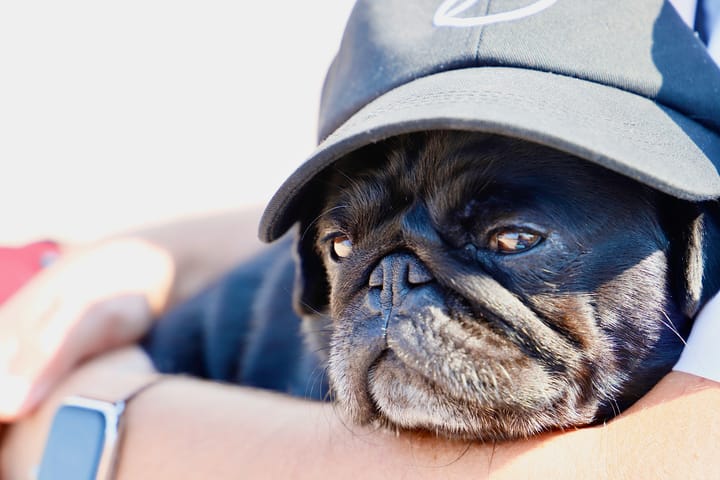Breathing Issues in Pugs: What Every Pug Parent Should Know
Because of their unique facial structure, pugs are prone to respiratory problems that require awareness, care, and sometimes medical attention. In this Club Pug post, we're diving into everything you need to know about pug breathing issues — from understanding the cause to caring for your pup.

Those little snorts, grunts, and wheezes are part of what makes pugs so lovable — but behind that adorable soundtrack can be serious breathing concerns. Because of their unique facial structure, pugs are prone to respiratory problems that require awareness, care, and sometimes medical attention. In this Club Pug post, we're diving into everything you need to know about pug breathing issues — from understanding the cause to caring for your pup.
🐾 Why Do Pugs Have Breathing Problems?
Pugs are classified as a brachycephalic breed, meaning they have short noses and flat faces. While this gives them their signature smooshy look, it also leads to structural challenges in their airways, including:
- Narrow nostrils (stenotic nares)
- Elongated soft palate
- Small trachea (windpipe)
- Everted laryngeal saccules (tissue obstructions near the vocal cords)
Together, these issues make up a condition called Brachycephalic Obstructive Airway Syndrome (BOAS) — a common and potentially serious concern for pugs.
😤 Common Symptoms of Breathing Trouble
Keep an eye (and ear!) out for these signs of respiratory distress:
- Loud, labored breathing — especially during rest
- Snorting, snoring, or wheezing
- Exercise intolerance or sudden collapse after exertion
- Excessive panting or open-mouth breathing
- Difficulty eating or swallowing
- Gagging or vomiting after meals
- Blue-tinged gums or tongue (a sign of oxygen deprivation)
These symptoms can range from mild to life-threatening, especially in hot or humid weather.
🌡️ How to Help Your Pug Breathe Easier
You can't change your pug's anatomy, but you can make lifestyle changes that greatly improve their comfort and health:
1. Keep your pug cool
Overheating is dangerous for flat-faced breeds. Limit exercise during hot weather, use cooling mats, and always have water available.
2. Maintain a healthy weight
Extra weight increases pressure on the airways. Ask your vet for a weight target that supports easier breathing.
3. Use a harness, not a collar
Harnesses avoid putting pressure on the trachea, which helps prevent choking and restrictiveness during walks.
4. Avoid stress and overexertion
Pugs should never be pushed to the point of panting heavily or collapsing. Keep walks short, and let them rest often.
5. Discuss surgery with your vet
In moderate to severe cases, corrective surgery on the nostrils or soft palate can dramatically improve quality of life. This surgery to open airways is called Brachycephalic Obstructive Airway Syndrome (BOAS).
🩺 When to Seek Veterinary Help
Breathing issues should never be brushed off as "normal for pugs." See your vet if:
- Your pug struggles to breathe while resting
- They faint, collapse, or turn blue during activity
- You hear increased snoring or choking noises
- You notice worsening symptoms over time
Your vet may recommend tests such as x-rays or an airway evaluation under sedation to determine the best course of treatment.
Club Pug Tip: Many pug parents get used to the sound of snorts and snores — but don’t ignore new or worsening sounds. If something seems off, trust your gut and call your vet. 💛
Do you have a breathing-related tip, product, or story to share? Drop it in the comments — let’s help each other keep our pug babies breathing easy. 🐶💨



Comments ()